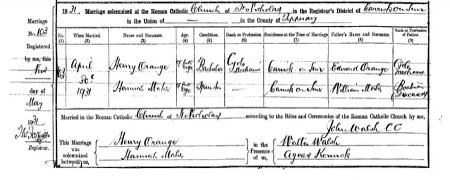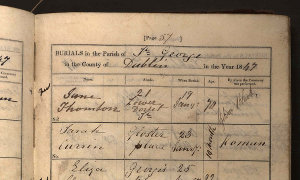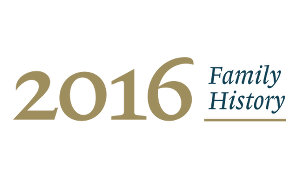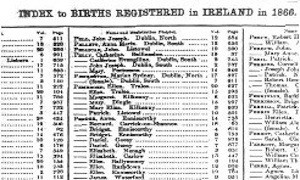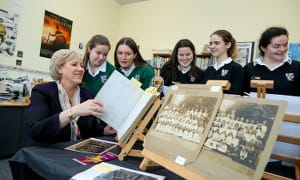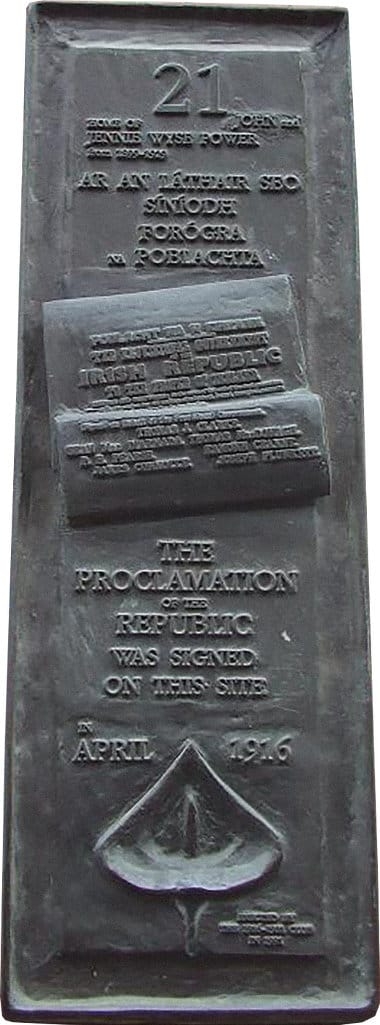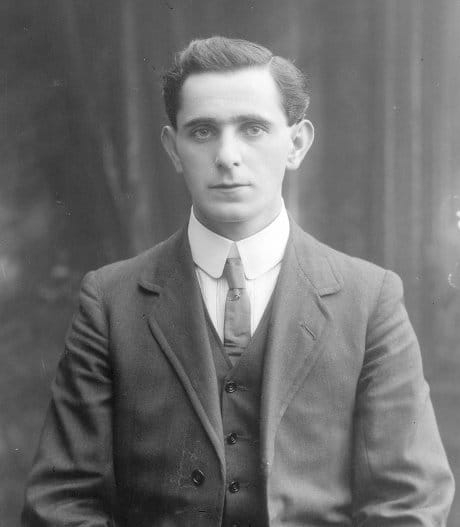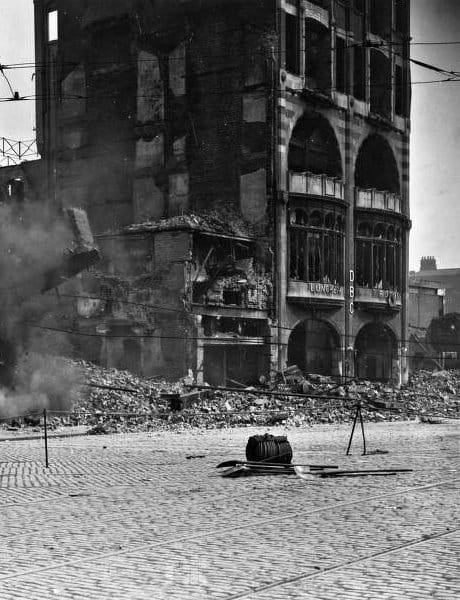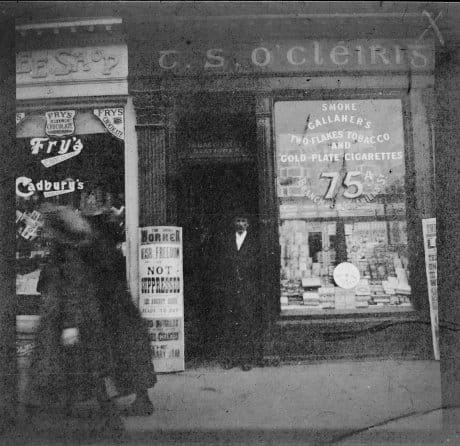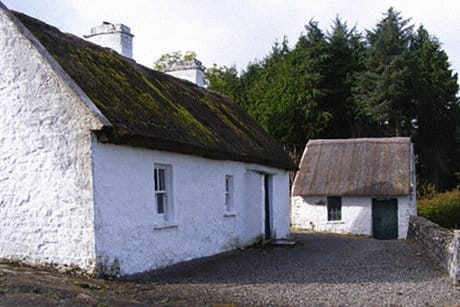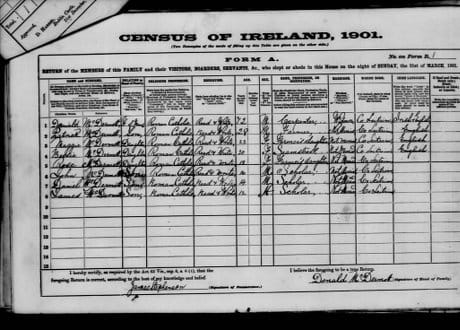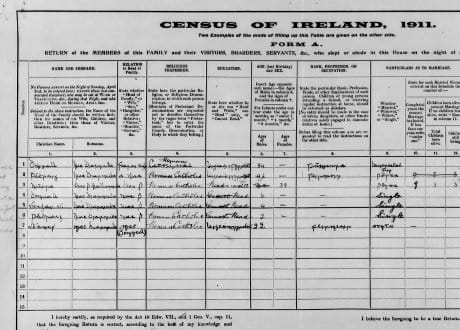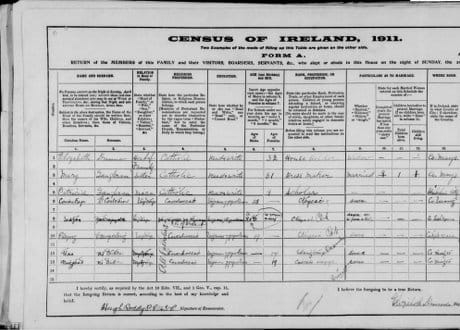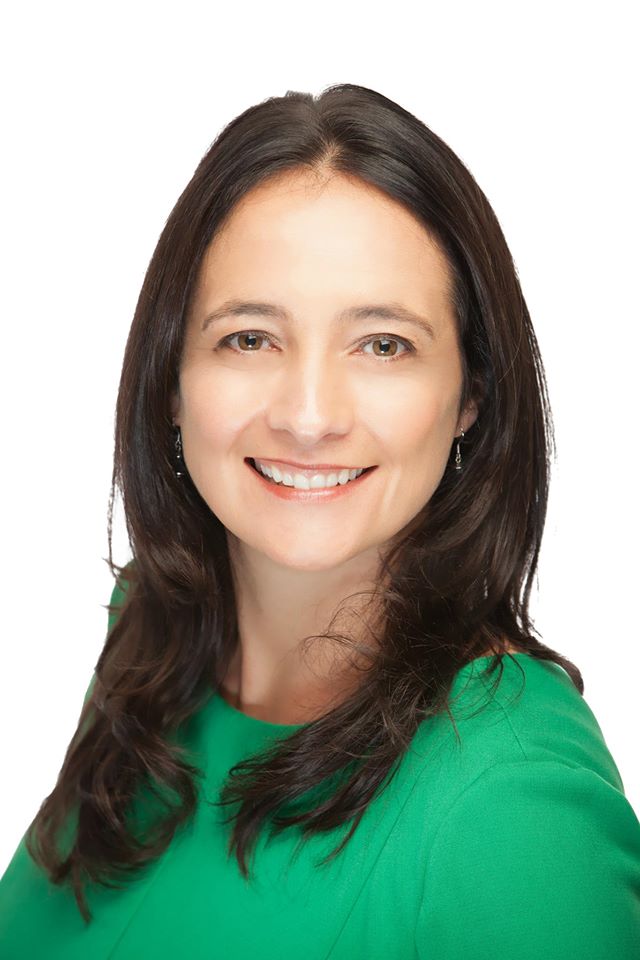Seán Mac Diarmada (Learning Resources)
Research Profile: Seán Mac Diarmada
Public and private life: discovery in the archives.
The public man in 1916: an introduction
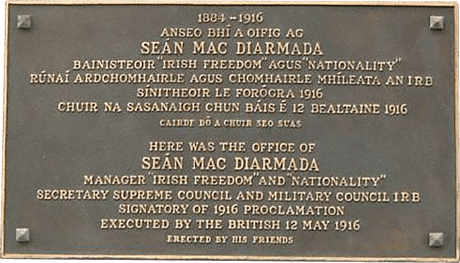
This plaque placed at the site of Seán Mac Diarmada’s office at No. 12. D’Olier Street, Dublin, highlights his roles: as secretary of the Military Council of the Irish Republican Brotherhood (IRB); as manager of Irish Freedom (the paper of the IRB) and Nationality (edited by Arthur Griffith); and as signatory of the Proclamation in 1916. He was executed on 12th May 1916.

His name follows that of Tom Clarke on the Proclamation of 1916. Together, they are regarded as the key architects of the Rising.
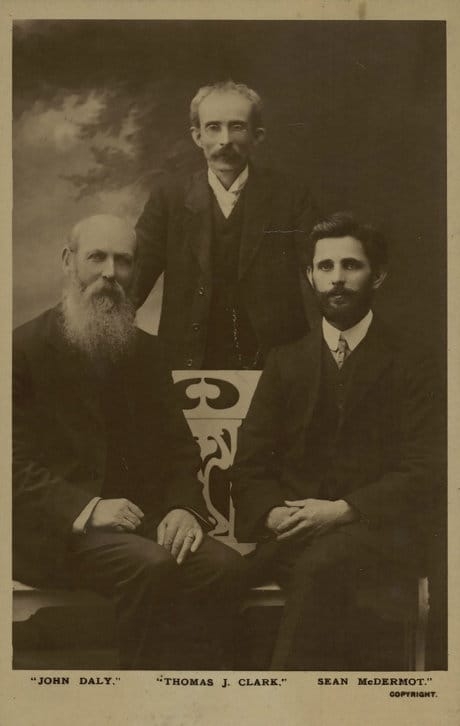 Photo: Courtesy of the National Library of Ireland
Photo: Courtesy of the National Library of Ireland
This photograph shows the 60 year old Tom Clarke at the back with John Daly, Fenian, uncle of Kathleen Clarke and Ned Daly (also executed in 1916) and the young bearded Seán Mac Diarmada seated in the front. Taken in 1915, at the request of Seán Mac Diarmada.
These represent the well-known and public aspects of Mac Diarmada. However, by examining the oral accounts, official reports and private letters, it is now possible to gain a more intimate view of the private man and his world.
The Rising: behind the scenes
Good Friday 1916 in the Red Bank restaurant, D’Olier Street, Dublin
Through the evidence in the Bureau of Military History witness statements of his immediate circle, we can follow him across the street from his office at No. 12 D’Olier Street and into the Red Bank restaurant at No. 19 – 20, where several of the diners on that fateful day were absorbed in putting into place the plans which were meant to shape the events of the coming week.
In the extract below, Diarmuid Lynch describes the pivotal moment when Mac Diarmada gave him the plans of each building to be seized by the rebels and his handing on of the sketch of the Four Courts to Ned Daly:

Statement of Diarmuid Lynch: WS 4, p25, par.2
- Diarmuid Lynch from Cork served in the GPO garrison. He was sentenced to death, but this was changed to 10 years penal servitude as he had American citizenship.
- Ned (Edward) Daly, from Limerick occupied the Four Courts on Easter Monday. He was executed on 4th May in Kilmainham.
- Piaras Béaslaí, from Liverpool was second in command to Ned Daly in the Four Courts. He was sentenced to five years penal servitude.
James Ryan describes Mac Diarmada’s request to him to carry a secret order that evening to Tomás Mac Curtain, one of the Volunteer leaders in Cork.

Statement of James Ryan: WS 70, p1, par.1
- James Ryan from Wexford served as medical officer in the GPO.
Min Ryan (Mary Josephine Mulcahy) captures the tension and sense of mystery in the dining room that afternoon:
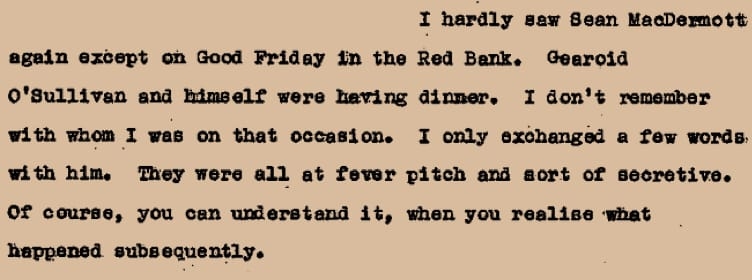
Statement of Mary Josephine Mulcahy: WS 399, p7, par. 2
- Min Ryan (Mary Josephine Mulcahy), from Wexford, sister to James Ryan. She served in the GPO and carried dispatches in and out of the building for Pearse and the O’Rahilly.
- Gearóid O’Sullivan, from Cork. He is credited with raising the tricolour over the GPO. He was interned in Frongoch, Wales.
Mac Diarmada’s social life: new perspectives
If D’Olier Street was the axis of his political life, the witness statements also offer glimpses of his social life.
Around Grafton Street
Coming from the Volunteer offices at No. 2 Dawson Street he would drop into the Bailey in Duke Street for a smoke and a drink and meet like-minded friends, such as Jack Morrow, the artist, or Piaras Béaslaí, the journalist, for a chat. The Ryan sisters met him in nearby Bewleys for a coffee almost on a daily basis.
Ranelagh
He was a frequent visitor to the Ryan home, at 19 Ranelagh Road. Mary Kate (Kit) Ryan was a lecturer in French in UCD, while Min taught night classes in French and German in the Rathmines Commercial College (full biographical details: online version Dictionary of Irish Biography).
Both sisters were very involved in the Sinn Féin movement and were members of other radical groups.
Here in No. 19, university students and lecturers, journalists, writers and political activists would gather on Sunday nights. According to Min, it was all very light-hearted: good conversation, singing and recitations of patriotic poems. Tea and buns were served throughout the night.
One of those visitors was Monsignor Pádraig de Brún, Professor of Mathematics in Maynooth, who considered Mac Diarmada as ‘very well read, especially in history, and with a fair grasp of the Irish language’.
Henry Street
During the week, he was known to walk the short distance from D’Olier Street down Sackville Street (O’Connell Street), passing the GPO, turning into Henry Street to the restaurant, The Irish Farm Produce Company, which was a few doors down at No. 21.
Owned by Jennie Wyse Power, (nationalist, feminist, a founding member of Cumann na mBan) and her husband John, the restaurant was a well-known meeting place for Arthur Griffith and other leading members of Sinn Féin. According to Nancy Wyse Power (Jennie’s daughter), Mac Diarmada was ‘constantly there’. She also states the Proclamation was signed in a private room upstairs, on the evening of Wednesday 19th April.
No. 5 Lower Abbey Street
The Ship hotel and tavern was owned by Alderman John Davin. He is described by Michael Noyk as ‘a good nationalist and [the tavern] was a rendezvous for all types of Irish separatists’.
Mac Diarmada went there regularly for lunch and was seen there on Holy Saturday evening. Noyk, in his statement, describes going in there that night and sensing an atmosphere of ‘unwonted excitement’. ‘Men who frequented the place and who normally appeared to be joking and laughing were now all engaged in serious conversations’.
Personal traits and traumas
Described in his early life as energetic, athletic and strong, he tirelessly toured the country as a Sinn Féin organiser. All that changed in the Autumn of 1911 when he contracted a form of polio which left him with a ‘crippled left leg’ and other infirmities. When he left hospital after four months, he was described as ‘unrecognisable’. From then on, he could only walk with the aid of a stick.
Despite this, he is invariably described in witness statements as ‘always in good humour’, ‘light-hearted’, ‘fond of a joke’ ‘sociable’, ‘outgoing’. Both men and women refer to him as ‘lovable’, noting his good looks, in particular ‘his kindly eyes’, and ‘his broad smile’. Some likened him to Michael Collins in his infectious enthusiasm.
The DBC Luncheon and Tea Rooms, Sackville Street
Bob Brennan from Wexford paints a vivid picture of meeting him in another restaurant, the DBC Luncheon Rooms, 5 – 6 Sackville Street (O’Connell Street) on the corner with Abbey Street. This was yet another place where the Ryan sisters and other young nationalists like Seán T O’Kelly and Mac Diarmada socialised.

Statement of Robert Brennan: WS 779, p23, par.2
Official ‘Diary’: Dublin Metropolitan Police (DMP), (Movement of Extremists files)
The detective unit of the DMP kept a daily diary of a different kind, carefully tracking the comings and goings of John McDermott (they used the English version of his name) and the other ‘suspects’ as they went about their business, e.g.
| 1915 December 23rd | ‘With Thomas J Clarke at his shop in 75a Parnell Street... Joseph Murray, John McDermott and John McGarry for half an hour, between 8-9 p.m’. [both Murray and McGarry were IRB members who later served in the GPO] |
| 1915 December 24th | ‘Thomas J Clarke and John Mc Dermott left Kingsbridge Station by 6.15 train en route to Limerick. RIC informed...’ |
Part 1: Social & personal – the early years
The information in Census forms for 1901 and 1911 uncovers details and influences of his early life which point to the man whom we encounter in 1916.
Mac Diarmada grew up in this house very similar to those of his neighbours in the townland of Laghty Barr. In the Census forms, they are all described as farmers and many are elderly. The MacDermotts have the largest and youngest family.
Source 1
The 1901 Census, Lagthy Barr, Leitrim. View.
According to the information in the Census, the McDermotts live in House No 1 in the townland of Lagthy Barr, which is in the DED of Glenfarne, Co Leitrim
- What language is used to fill in the form?
- What version of his (Mac Diarmada’s) name is used in the form?
- What was his father’s occupation?
- How many boys and girls were in the family?
- What information is given for each person in the language column, entitled Irish language?
Source 2
The 1911 Census, Lagthy Barr, Leitrim. View.
According to the information in this Census, the family is still living here, but note the various changes which have taken place in ten years. Use worksheet.
- How many of the original family are gone from the house?
- Who is now living there?
- What language is used to fill in the form?
- What information is given for each person in the language column, entitled Irish language?
- How does this differ from the previous census?
Source 3
The 1911 Census, 15 Russell Place, Dublin. View.
By 1911, Mac Diarmada, aged 26, was living in Russell Place, Dublin. His life had changed considerably. He is now involved in many of the key organisations, both cultural and political.
Examine the census return for the lodging house and answer the following questions:
- In what language do he and the other lodgers fill in the form?
- In column 4, he describes his religion as ‘náisúntacht na hÉireann’. ‘nationalism of Ireland’. How does the enumerator translate this?
- In column 9, marital status, he describes himself as ’single’ but ‘not for long’ (‘aonta, ach ní fada a bheidh’).
- In column 15, under ‘infirmity’, he describes himself as ‘croí briste’ – ‘m’aontacht’ / broken hearted because of being single.
Source 4
Census Day, 2 April, 1911.
The DMP (Dublin Metropolitan Police) assisted as enumerators in Dublin. Their tasks included the distribution, collation and collection of the forms.
Read an account of Dublin on 2nd April.
